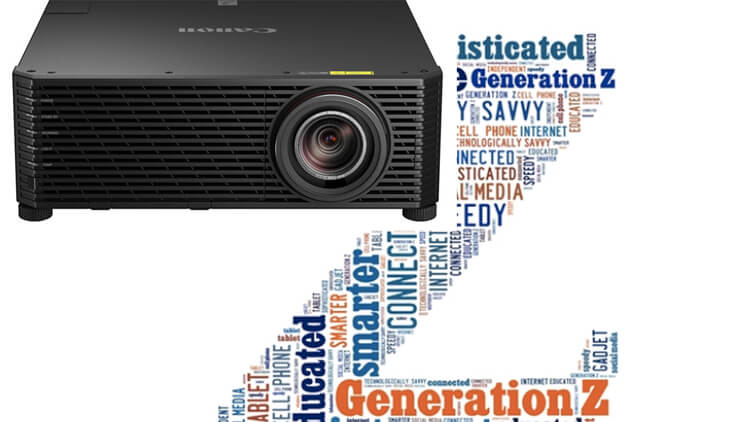How Projectors Can Help Meet the Tech Demands of Gen Z

- Times were when all the audio-visual tools needed to teach a college class were a blackboard, a box of chalk and an eraser. With the rapid expansion of phones, tablets and social media, a professor or teaching assistant will likely find it hard to compete with students’ limited attention spans and own technology.
But there are ways that the college classroom can hold its own with an attention-challenged student body by fighting digital fire with fire. Start by attempting to stimulate your students and follow through with getting them to participate in the lesson. In both cases, the classroom projector can be front and center for this effort.

The constant updates and social demands of Facebook, Twitter, Instagram and other social sites can easily pull a student away from the lesson at hand. After all, how can the poetry of Elizabeth Bishop or coding a phone app stand up to what Iggy Azelea has recently done. The notion is that rather than trying to get kids to ignore their own technology, use it to hook them on the lesson at hand.
The breakthrough is that interactivity can get students to visualize and internalize what they’re learning, making it seem less like work and more like fun. A good idea for the physics class or lab is to tap into the University of Colorado PHET simulations, which are not only interactive but can be key to teaching anything from radioactive decay to how springs work. There are dozens of simulations that can help any math or science classroom by making it relevant to the kids. For instance, a simulation of gravity and the conservation of motion takes place at a digital skate park.
For some classes it can come together with 3-D content, but you’ll need a 3-D-ready projector and those odd-looking glasses to make it work. With the right material, it’s worth the effort because you can see the depth of an object rather than a flat view. It really works with projecting a realistic view of what it’s like for a blood cell to travel through the heart for medical students, taking a walk through the Great Wall of China and is without compare to try out designs before they go to a 3-D printer.
The other leg that university instruction needs to stand on is student participation. This goes beyond getting students to raise their hands to answer questions. It works best when you’ve engaged them to take part and – at times – command the learning experience. It can feel like teaching without a net because you never know what they’re going to do or say, but the results can be gratifying.
Rather than getting students to put their mobile devices down or banning them outright (hardly likely), try getting them to contribute via their phones or tablets. In addition to using them as response clickers, many classroom projectors allow students to join in and project what’s on their screen. This makes it the modern-day equivalent to coming to the blackboard to mark up a sentence or fill in the blanks on a map. Some of the latest projectors even allow four contributors to share the screen in quadrants, making comparisons of projects and homework possible.
A daily selection of features, industry news, and analysis for tech managers. Sign up below.
